Australian Tropical Rainforest Plants - Online edition
Harpullia rhyticarpa C.T.White & W.D.Francis

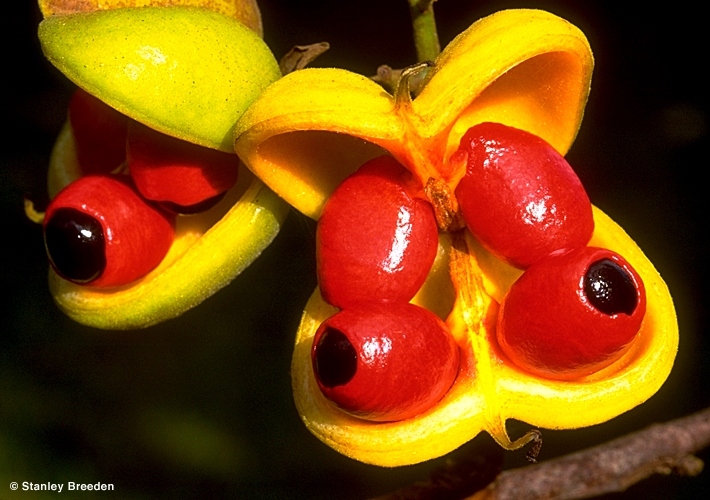
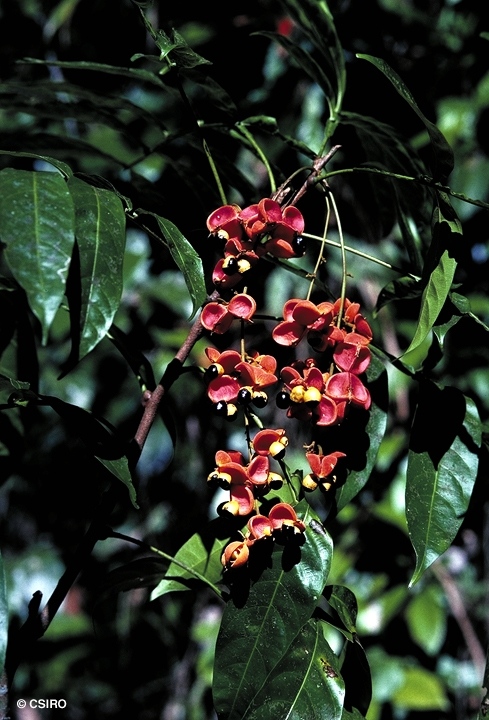
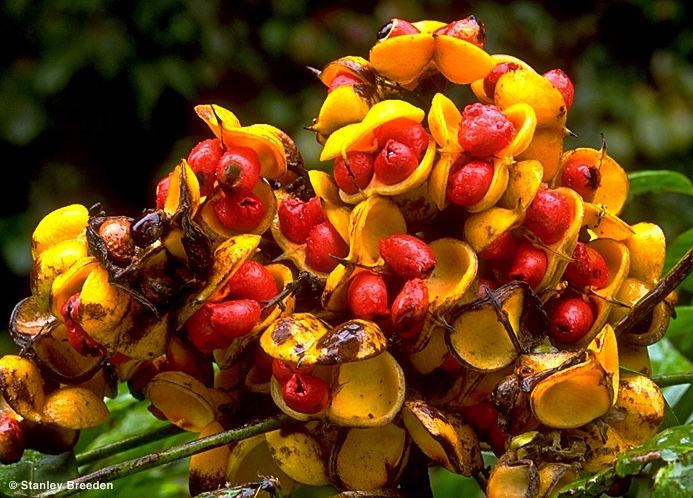


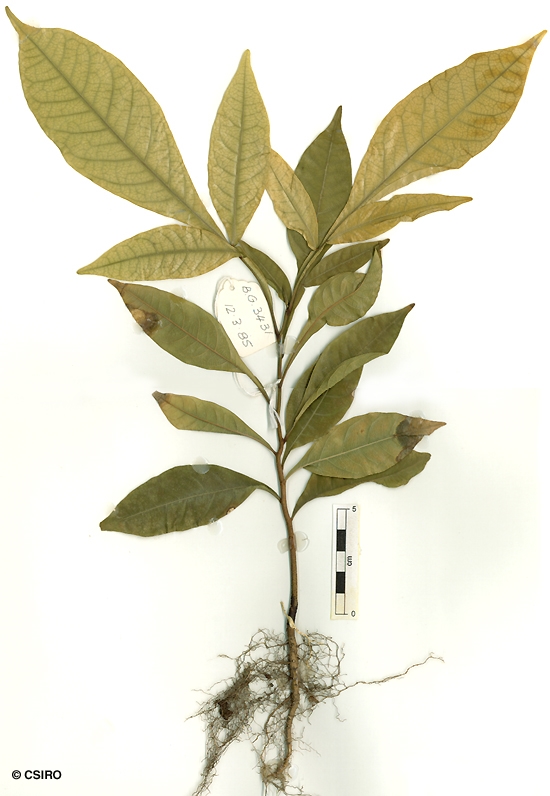
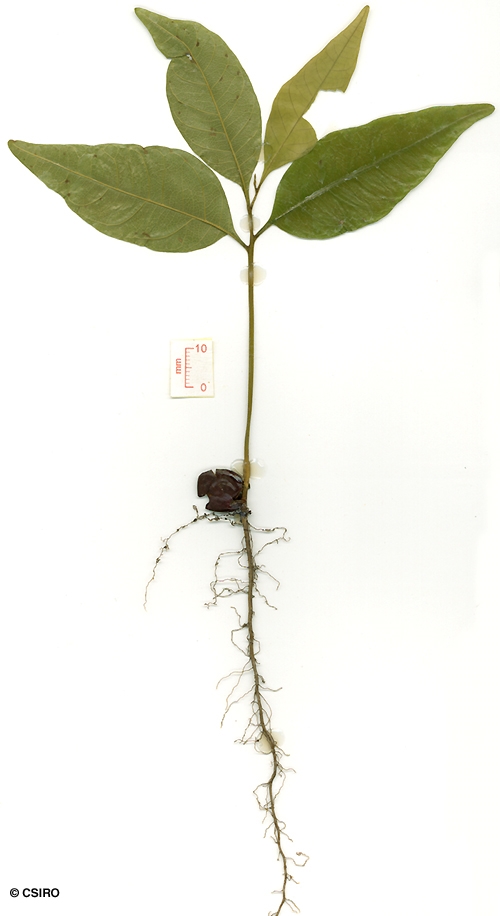
White, C.T. & Francis, W.D. (1920) Queensland Department of Agriculture and Stock. Botany Bulletin 22: 10. Type: Queensland, Barnards Spur, Bellenden-Ker Range, F.M.Bailey; holo: BRI.
Harpullia, Slender; Slender Harpullia
Occasionally grows into a small tree but usually flowers and fruits as a spindly shrub about 2-4 m tall.
Compound leaf petiole and rhachis conspicuously winged or without wings. Stellate hairs usually visible somewhere on young compound leaves, terminal buds and young shoots. Compound leaf petiole swollen at its junction with the twig. Leaflet stalks short. Leaflet blades about 3.5-17 x 1.5-5.5 cm, lateral veins raised on the upper surface.
Fruit 2-locular, laterally compressed, about 1.5-2.5 cm long, outer surface stellate hairy, calyx persistent at the base. Seed about 12-14 x 9-11 mm, largely enclosed in the aril. Testa smooth, shiny black. Cotyledons pale green.
First pair of true leaves simple, opposite or sub-opposite. Stem clothed in brown stellate hairs. At the tenth leaf stage: leaf simple or compound with three leaflets. Midrib and lateral veins raised on the upper surface of the leaf or leaflet blades. Terminal bud clothed in brown stellate hairs. Seed germination time 13 to 65 days.
Endemic to NEQ. Altitudinal range from near sea level to 1200 m. Grows as an understory plant in undisturbed, well developed lowland, upland and mountain rain forest.
A very attractive shrub that should be tried in tropical gardens. It probably needs a shady protected position but fruiting specimens are outstanding.





